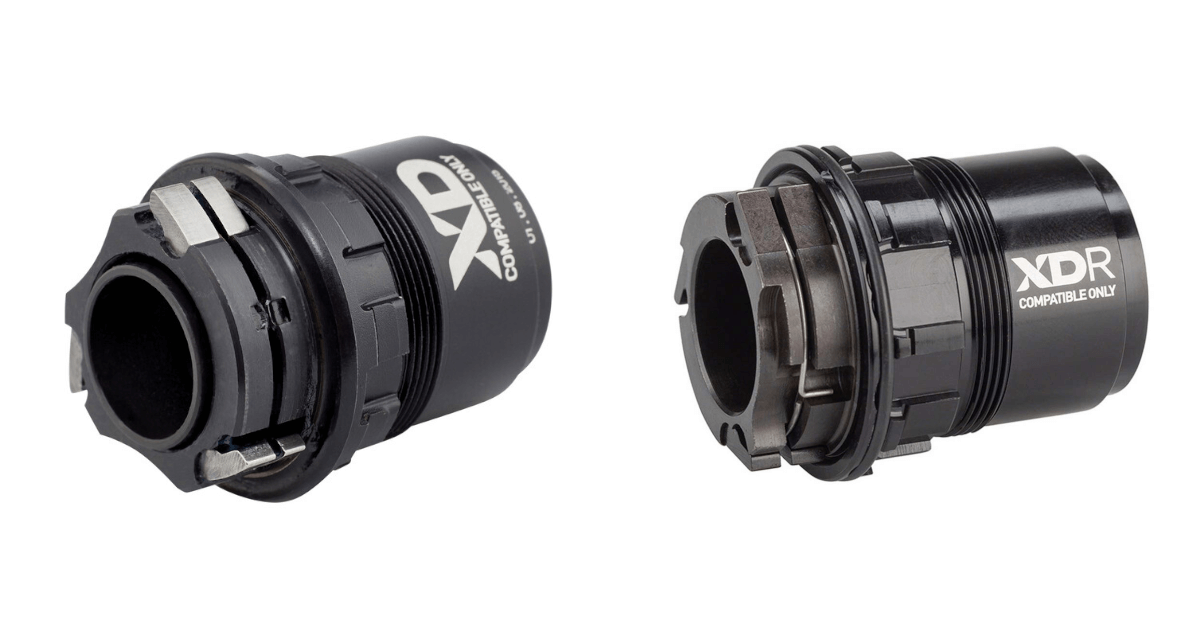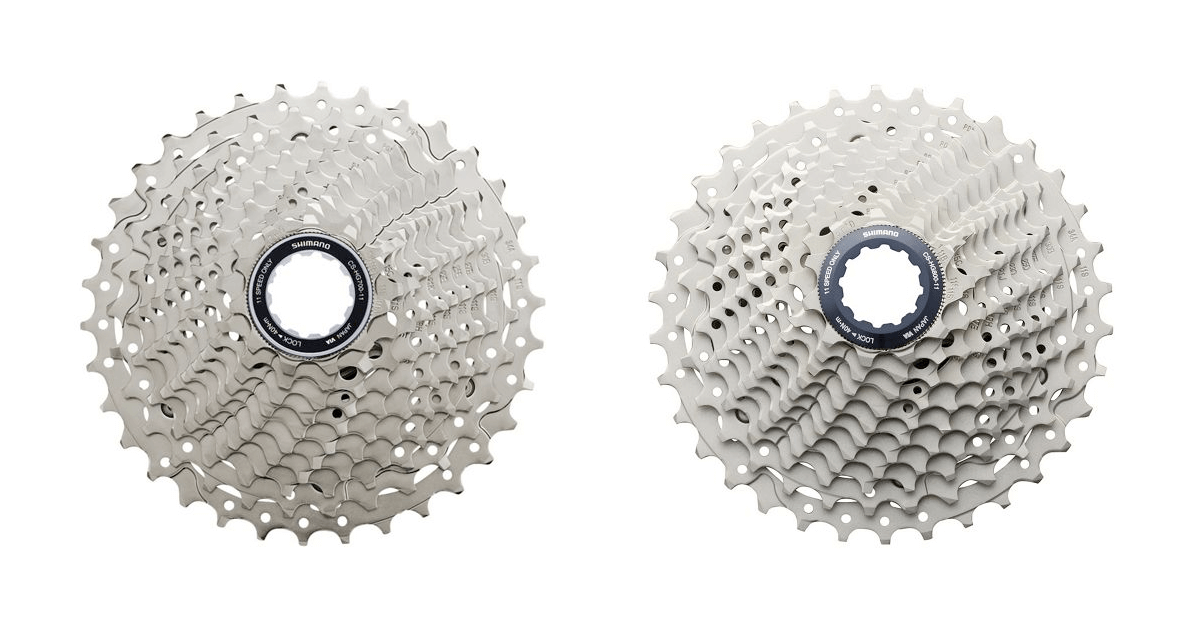Overview and Specifications of WheelTop's Affordable Electronic Groupset "EDS"
This article summarizes the features and specifications of the budget-friendly electronic groupset "EDS" newly released by the Chinese manufacturer WheelTop.
Posted at: Sep 12, 2022
The following is a summary of SRAM's proprietary XD and XDR standards, what makes them different from Shimano's, and what to look for when purchasing.

Table of contents
Sponsored Link
XDR and XD are SRAM’s proprietary freebody standards.
XD was originally developed as a 10-speed freebody for MTB when it was first released in 2015. Later, when the freebody height had to be increased to accommodate 11 speeds, it was necessary to increase the height of the freebody, but because it was designed for MTBs, it was made 11-speed by taking advantage of the high number of teeth on the low cog of the sprocket and extending it out toward the spokes. The same is also done by Shimano.

How to convert to 11-speed with a 10-speed wheel
This article explains how to convert your compo to 11-speed while keeping your existing 10-speed wheels, and how to tell the difference between 10-speed wheels and 11-speed wheels. Using this method, you can convert your wheels to 11-speed while making the most of the wheels you already have.
On the other hand, sprockets for road bikes at that time had a low maximum of 25T or 28T and could not be physically pushed out to the spoke side, so the XDR was developed to accommodate 11-speed sprockets for road use.
Therefore, XD and XDR have basically the same structure, but there is a difference in the height of the free body: sprockets for XD can be used with XDR free, but not vice versa.
The XD and XDR are characterized by the fact that they do not have splines throughout the entire conventional freebody, but only in the low several steps, and that they are threaded to connect the sprockets on top of them. Since the free body and sprockets are attached to each other by their own threads, conventional lock rings are no longer needed. As a result, the free body itself can be lowered, making the free body lighter.
Naturally, Shimano’s HG (Hyper Glide) standard sprockets, which are standard in Japan, cannot be installed.
As for the XDR, the biggest advantage is that it allows the selection of a minimum top gear of 10T. Shimano’s road-use components still have a minimum top gear of 11T even after the introduction of 12-speed, but SRAM’s road-use components are compatible with 10T.
The disadvantage of XD/XDR would be its low availability.
SRAM components are not that popular in Japan, and SRAM has always had many Shimano-compatible products, so they are not well known, but Mavic, DT Swiss, Fulcrum, and others sell XDR-free wheels or replacement free bodies.
However, in terms of distribution in Japan, the disadvantage is that very few products are actually sold and availability is low.
When buying XD/XDR wheels or a complete bike equipped with XD/XDR wheels, it is important to note that the wheels will be “fully SRAM assembled”.
SRAM 11-speed sprockets cannot be used in combination with Shimano 11-speed components because SRAM 11-speed and above are not compatible with Shimano. If the sprockets are not compatible with Shimano components, all other components around the drivetrain will also have to be SRAM.
SRAM itself is a manufacturer that produces excellent components, but the disadvantage is that they are not readily available in Japan. There are only a few of them available on the used market as well as new ones, and it is difficult to find the right parts.
In addition, XD and XDR wheels do not have high resale potential because they are not in very high demand. They can often be used by replacing the freebody with Shimano’s HG standard, but there are few compatible freebodies in circulation, and if the freebody costs more than $100, it would be realistic to trade them in for a sparrow’s eye price.
This is fine if you want to build a road bike with SRAM, but if you buy XDR standard wheels without knowing what you are getting into, you will be in for a world of pain.
Sponsored Link
Overview and Specifications of WheelTop's Affordable Electronic Groupset "EDS"
This article summarizes the features and specifications of the budget-friendly electronic groupset "EDS" newly released by the Chinese manufacturer WheelTop.
What Is Shimano Shadow RD? Features and Benefits
What is Shimano’s Shadow RD used in their latest rear derailleurs? This article explains its features and the benefits of choosing Shadow RD.
[MTB / Hybrid Bike] Hydraulic Brake Manufacturers for Flat Bars
An overview of manufacturers that produce hydraulic brakes for flat-bar MTB and hybrid bikes, along with their key features. Also includes tips on how to choose the right flat-bar hydraulic brake brand.
Shimano Chain Compatibility for Road, MTB, and Hybrid Bikes
An overview of Shimano chain compatibility across road bikes, mountain bikes, and hybrid bikes. Includes guidance on how to choose the right chain for your drivetrain.
Shimano ESSA Lineup and Compatibility with Existing 8-Speed Parts
An overview of Shimano's newly released 8-speed component group "ESSA" and its compatibility with existing 8-speed parts.
SRAM Cassette Compatibility Guide
Compatibility guide for SRAM cassettes used in road and MTB bikes. Find matching drivetrains and wheels easily.
Compatibility Guide for SRAM MTB Components
A detailed explanation of compatibility between SRAM MTB components. This guide outlines which parts can be used together and which combinations are not compatible.
Road and MTB Sprockets Compatibility Overview
A guide to the compatibility between road and MTB sprockets, explaining whether they can be used together with different components.
Types of Shimano Di2 Tools and Their Compatibility
A guide to the essential Shimano Di2-specific tools, especially the "plug tools" used for connecting components, and their compatibility with various Di2 parts.
Shimano CUES Cassette Compatibility Guide
A detailed guide to the compatibility of Shimano CUES series cassettes. Includes an overview of compatible rear derailleurs, chains, and wheels.
Shimano Hydraulic Brake Hose and Connector Standards Guide
An explanation of the differences between Shimano’s hydraulic brake hoses BH90 and BH59, the types of connecting bolts, and how to choose the right hose for your brake system—including key points to watch out for.
[By Manufacturer] Types, Features, Pros and Cons of Hydraulic Brake Oils
This article explains the types of hydraulic oils used in bicycle hydraulic brakes, their characteristics, and the brake oil types used by each manufacturer.
Types and Compatibility of Shimano Di2 Batteries
The Di2 battery is the core of the Shimano Di2 system, influencing the overall system layout. This article explains the different types and their compatibility.
Shimano Di2 Wire Types and Compatibility
Overview of Shimano Di2 electric wire types and their compatibility with Di2 components.
How to Identify Shimano Di2 Generations
Explains the generational differences in Shimano Di2 components and their compatibility. Includes a list of component series and their corresponding generations.
In-Depth Guide to Shimano 12-Speed Cassette Compatibility
A detailed explanation of the key compatibility factors when using Shimano's 12-speed cassettes—specifically the required wheel (freehub) and drivetrain, which differ significantly from previous 11-speed systems.
Perfect Guide to Shimano 11-Speed Cassette Compatibility
A detailed explanation of two key compatibility factors when using Shimano 11-speed cassettes: the required wheel (freehub) and drivetrain.
Perfect Guide to Shimano 10-Speed Cassette Compatibility
A detailed explanation of two key compatibility factors when using Shimano 10-speed cassettes: the required wheel (freehub) and drivetrain.
In-Depth Guide to Shimano 9-Speed Cassette Compatibility
A comprehensive explanation of two key compatibility factors when using Shimano 9-speed cassettes: the required wheel (freehub) and drivetrain.
What Is a BOOST Crank? Differences from Standard MTB Cranks and How to Choose
This article explains what a BOOST crank is, how it differs from conventional MTB cranks, and provides guidance on selection across different manufacturers.